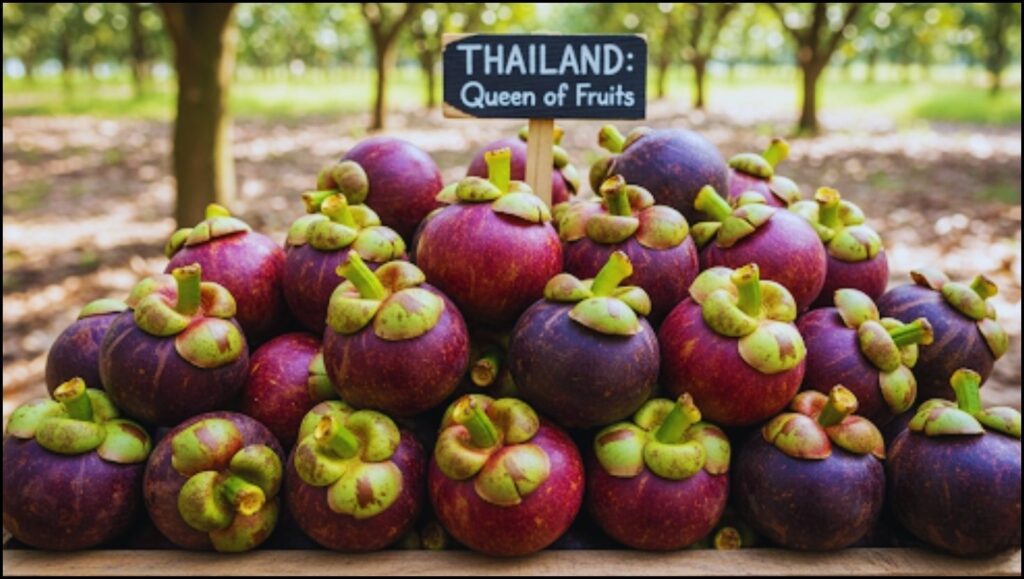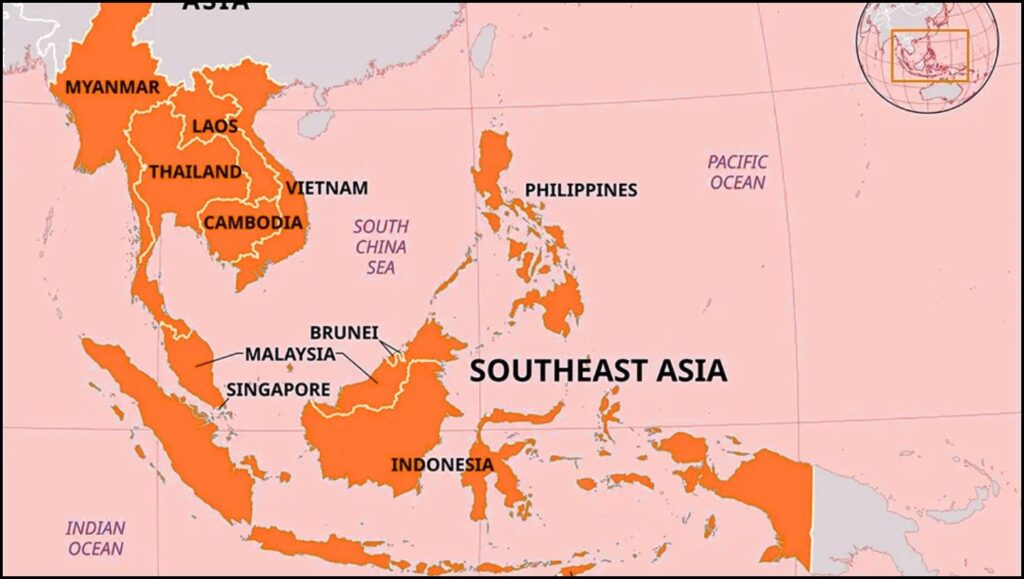Thailand has firmly established itself as the world leader in the cultivation and export of mangosteen, often hailed as the “Queen of Fruits.” The Southeast Asian nation boasts the most extensive mangosteen orchards and consistently dominates the global supply chain for this highly prized tropical fruit. This prominence underscores the country’s favorable climatic conditions, advanced agricultural practices, and strategic market positioning.

Southeast Asia: The Heart of Mangosteen Cultivation
The mangosteen (Garcinia mangostana) is indigenous to Southeast Asia, thriving in its warm, humid, and equitable climates. While cultivated across several countries in the region, including Indonesia, Malaysia, the Philippines, and Vietnam, Thailand’s output and export volume consistently surpass its neighbors. This leadership is not merely in raw production but also in the meticulous handling and export infrastructure that supports its global distribution.
In 2023, Thailand exported an impressive 248,612.25 tons of mangosteen, marking a 20.8% increase from the previous year, with an export value reaching US$502.24 million, a 25.6% growth, according to the Thai Trade Policy and Strategy Office (TPSO). This volume represents the vast majority of Thailand’s mangosteen output, with approximately 91% of its fresh and processed forms designated for export and only 9% consumed domestically.
Key Players in the Mangosteen Market
While Thailand is the undeniable leader in mangosteen exports, other countries contribute significantly to global production and supply, albeit on a smaller scale.
Thailand’s Dominance
Thailand’s mangosteen orchards are particularly concentrated in eastern provinces such as Chanthaburi, Rayong, and Trat. These regions benefit from ideal soil conditions and consistent rainfall patterns crucial for the fruit’s delicate growth. Thai farmers have developed sophisticated techniques for cultivation, harvesting, and post-harvest handling, ensuring high-quality produce that meets international standards. The primary export market for Thai mangosteen is China, which accounted for over 93% of its mangosteen exports in 2023. Other notable markets include Vietnam, Hong Kong, South Korea, and the United States, as reported by the TPSO.
Indonesia: A Significant Producer
Indonesia stands as another substantial producer of mangosteen, with cultivation spread across Sumatra, Java, Bali, and West Nusa Tenggara. Indonesian mangosteen production typically fluctuates between 30,000 to 70,000 tons annually. A considerable portion of its high-quality fruits are exported to countries like Taiwan, Singapore, Hong Kong, Malaysia, the United Arab Emirates, Saudi Arabia, and the Netherlands. Research by Universitas Padjadjaran highlights that while Indonesian mangosteen is highly sought after for its organic cultivation, traditional farming methods often lead to lower yields compared to more technologically advanced approaches. Efforts are underway to improve productivity through better grafting techniques and optimized fertilizer application, as noted in a ResearchGate publication on Indonesian mangosteen.
Other Notable Cultivators: Malaysia, Philippines, and Vietnam
Malaysia, the Philippines, and Vietnam also cultivate mangosteen, largely for both domestic consumption and regional export. In Malaysia, mangosteen cultivation is a long-standing tradition, with some farms dating back generations. While not reaching Thailand’s export volumes, Malaysian mangosteen contributes to the diverse supply within Southeast Asia and beyond, with some exports reaching Gulf countries.
The Philippines, known for its diverse tropical fruits, has two officially registered mangosteen varieties: UPLB Sweet and Roxas Purple. Research at the National Seed Industry Council (NSIC) in the Philippines is ongoing to evaluate germplasm and enhance understanding of the fruit’s growth and development processes.

Vietnam, particularly its southern provinces in the Mekong Delta and the Southeast region, provides ideal conditions for mangosteen. The harvest season in Vietnam typically runs from May to August, aligning with the peak rainy season. Vietnamese mangosteens are gaining international recognition, with increasing exports to markets like China, South Korea, and Japan, according to the Food and Agriculture Organization (FAO).
Challenges and Future Outlook
Despite the robust growth, the mangosteen industry faces several challenges. These include the susceptibility of trees to adverse weather conditions, as seen in Indonesia where heavy rains during the bloom period can significantly reduce yields. The long juvenile phase of mangosteen trees, often taking 7-15 years to bear fruit from seed, also presents a challenge for new orchard establishment.
However, advancements in agricultural technology, such as improved grafting techniques and regulated irrigation systems, are helping to mitigate these issues and enhance productivity and fruit quality. The global demand for mangosteen continues to rise, driven by its unique flavor profile and perceived health benefits, ensuring sustained focus on expanding and optimizing mangosteen production in key growing regions.
The Economic Impact
The cultivation and export of mangosteen represent a significant economic pillar for these countries, particularly for small-scale farmers who cultivate the fruit on family farms. The revenue generated from mangosteen sales supports local economies and provides livelihoods for countless individuals involved in planting, harvesting, packing, and exporting the fruit. As global appreciation for mangosteen grows, the industry is expected to continue its upward trajectory, bolstered by ongoing research and market expansion efforts.
How to Grow a Cherry Tree: Expert Advice for Bountiful Fruit and Blooms
